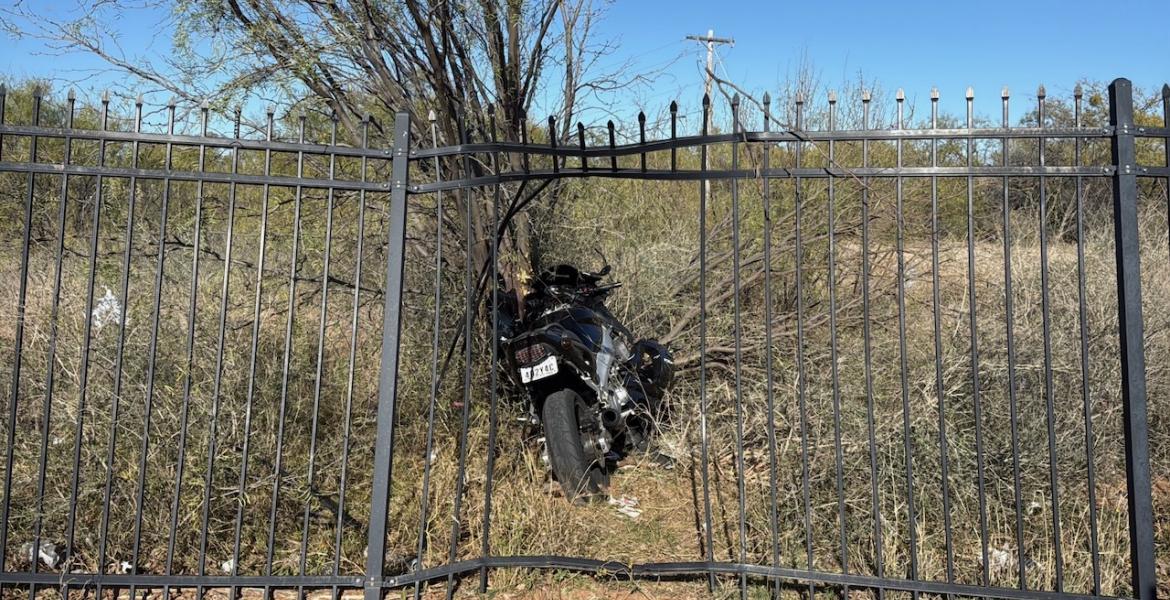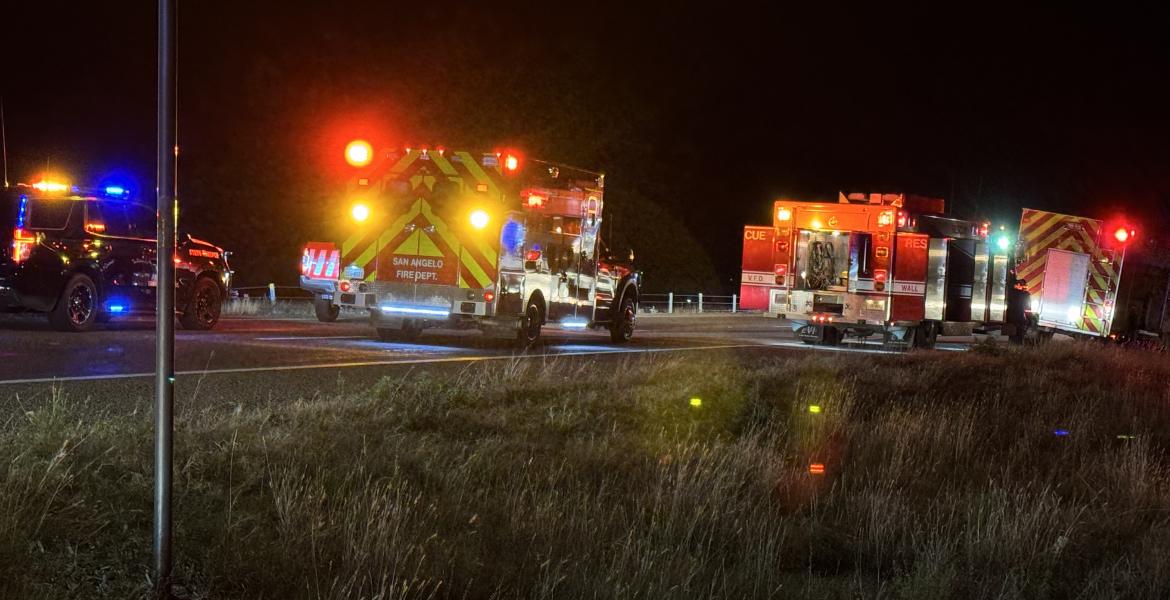Need for Speed, high-end computer and gaming equipment and a pair of beer goggles may sound like the perfect cocktail for a gamer’s Friday night, but a recent purchase of the latest in DWI and distracted driving awareness simulation by AB Distributing will employ just those ingredients to combat poor driving choices in local markets.
With the lights dimmed and the video game beamed on a large screen at the end of a room at the San Angelo AB Distributing warehouse on Tuesday, dozens of first responders and law enforcement officers learned to navigate the new DWIPOD Demonstrator.
The $15,000 of gaming equipment, which features two separate games a “student” operates under varying conditions—wearing drunk goggles, holding a cell phone—was purchased by the alcohol distributor as part of a campaign to promote social responsibility.
“It was just the next step in an effort that we had started in Odessa,” AB Distributing’s Director of Corporate Social Responsibility Retha Fortenberry explained. “[We’ve been] working with the oil sector there and talking about the importance of seatbelt use, distracted driving.”
Fortenberry said that in her work with the Odessa community, she coordinated frequently with TxDOT, who relayed they’d seen a new simulator that they didn’t have the funds to purchase. At that point, she said, she pushed for the purchase of the equipment for use in the local market.
“There’s only 12 of these devices in Texas right now and a good number of them are owned by an organization called Agri-Life…scheduling them and getting them into the west Texas area has been a challenge, and that’s why we stepped in and bought this one,” Fortenberry said.
Since the demonstrator was purchased, Fortenberry has coordinated trainings in Lubbock, Odessa and San Angelo. The training sessions are geared toward first responders and law enforcement officers, who will need to be familiar with the equipment to use it themselves in awareness functions and events.
A member of the Texas Department of Transportation (TxDOT) leads the training sessions, explaining the various functions of the game and how it may be used as an awareness tool.
“It’s designed to team teach,” Forternberry explained. “A lot of the young adults are very skilled at video games. Even if we put the highest DWI goggle on them, there’s a chance that they could have success and that’s the last thing we want them to have. So he can manipulate the situation so nobody wins.”
Basically, the game is set up as a traditional driving-centered video game in which the participant is subjected to various factors that will impair his or her driving. Beer goggles in various strengths serve to simulate drunk driving, while a second street driving game with a sensor attached to a hat simulates distracted driving.
In the distracted driving demo, the view on screen follows the movement of the driver’s head, dipping down to view the floorboard when one picks up a cell phone, and moving left and right with turns of the head.
As the driver navigates through the simulation, a TxDOT representative notes errors made that are common to distracted or intoxicated driving, alerting others in the room when a driver, for example, fails to see a pedestrian enter the screen while he or she looks down to check text messages.
The trainer further controls the session by manipulating variables such as traffic flow and pedestrians in order to keep the unexpectedness of reality in the session.
“Although they’re having a lot of fun in here, in actuality, in a real life educating environment, it would be more somber,” Fortenberry said. “So the person behind the screen would make sure that the student does not succeed.”
At Tuesday’s San Angelo training, participants laughed as the virtual driver crashed into barriers and attempted to outrun the police before being caught on foot. As was reiterated during the session, keeping the reality of the simulation at the forefront will be key to success.
“I think it’s a good idea to be able to get kids or anybody some real world application of what can happen if you get distracted in a vehicle or you’re driving impaired,” said Sgt. Cade Solsbery of the San Angelo Police Department. “I think the biggest key with it for me would be to make sure that while it is a game, just making sure they understand the real life implications of it. If things like this happen, the seriousness of it so they don’t just consider it something for fun.”
Solsbery said the police department intends to use the equipment in the near future for DWI and distracted driving awareness events in the community. Both issues are pressing matters locally, he said, adding that some form of drunk, drugged or distracted driving causes crashes locally on a daily basis.
“It’s a daily occurrence. Every day there’s somebody driving impaired or distracted by something, be it turning on the radio, eating, texting, something,” Solsbery said. “Of the fatalities or serious injuries that we get, alcohol is involved about 90 percent of the time.”
Caroline Priddy, EMS Director for Ballinger Memorial Hospital, said she thinks awareness programs and simulations are valuable and vital and believes the simulator will be useful for both teens and adults.
Adults are just as guilty as teens when it comes to texting and driving, she said, and drinking and driving isn’t just a holiday problem as some might believe.
“With the kiddos, it’s more of a problem at your graduations, your proms and summer,” Priddy said. “With the adults, it’s any time. It doesn’t have to be a holiday. It’s any time. They don’t focus on holidays at all. During our holidays a lot of times, that’s when we do less EMS-wise.”
The DWIPOD Demonstrator was designed by a police officer on the Texas State campus, Fortenberry said. She hopes to keep the demonstrator in the area for use at awareness events.
Subscribe to the LIVE! Daily
Required






Post a comment to this article here: